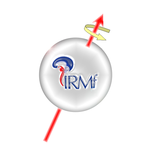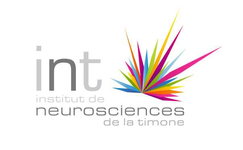Presentation
BIDS (Brain Imaging Data Structure) is a formalism for structuring data from functional neuroimaging studies introduced in 2016 by Krzysztof J. Gorgolewski, Russell A. Poldrack and their co-authors. BIDS draws heavily on the format used by the OpenfMRI repository (now known as OpenNeuro.org).
The seminal article of this work was published in the journal Scientific Data
Gorgolewski, K. J. et al. The brain imaging data structure, a format for organizing and describing outputs of neuroimaging experiments. Sci. Data 3:160044 doi: 10.1038/sdata.2016.44 (2016).
The BIDS website can be accessed at http://bids.neuroimaging.io
BIDS is defined by its authors as a simple and easy to adopt way to organize brain imaging and behavioral data from neuroimaging studies.
Its advantages are multiple:
- There is a growing number of (world-class) data analysis software packages (quality analysis, pre-processing, statistical analysis, …) that work with data organized according to BIDS (see http://bids.neuroimaging.io for the most up-to-date list).
- Databases such as OpenNeuro.org accept data sets organised according to BIDS. If you plan to share your data publicly (more and more journals require this), you can minimize the extra time and energy spent on publication and speed up the preservation process by using BIDS to structure and describe your data immediately after acquisition.
- Because the file organization and format is fully described in the formalism, it is easy for another researcher to work on your data.
- Validation tools are available that can check the integrity of your dataset and allow you to easily identify missing values.
BIDS at the MRI Centre
BIDS has been in use at the MRI Center since the installation of the Prisma 3T. All the data acquired (in DICOM format) within the framework of research protocols are converted to NIfTI format, organized and archived according to this formalism, integrating possible behavioural data (from the stimulation system) and certain pre-processing (field maps for example).
The consistency of the datasets is guaranteed by the use of an online validator: https://bids-standard.github.io/bids-validator.
Furthermore, the use of this formalism has enabled the development of complete and detailed quality analysis procedures.
The procedures now routinely managed are :
| Modality | Data type | Description |
|---|---|---|
| T1w | Anat | T1-weighted Image |
| T2w | Anat | T2-weighted Image |
| T1map | Anat | Quantitative T1 map |
| MPRAGE | Anat | |
| TOF | Anat | Time-of-flight angiography image |
| bold | Func | BOLD functional images |
| SBref | Func | "Single Band" reference image produced by multi-band acquisitions |
| dwi | dwi | Diffusion-weighted images |
Multi-echo fMRI data integration is in progress.


